

HOUSTON
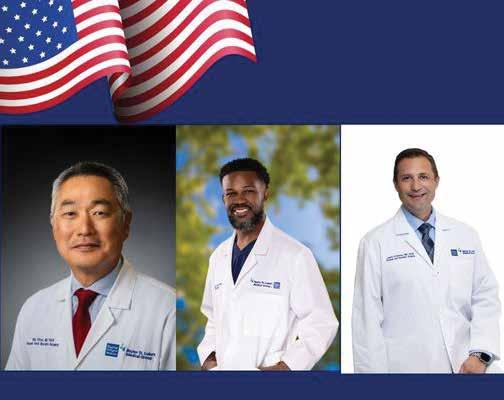
FDA Takes Aim at Drug Ads: What It Means for Compounding Pharmacies, Medspas and Telehealth Companies
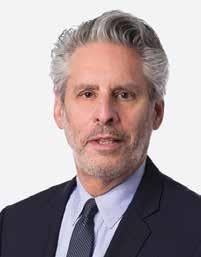
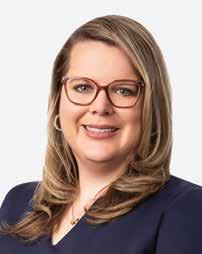
By Stuart M. Pape, J.D. Suzanne E. Bassett, J.D. Polsinelli, PC
The U.S. Food and Drug Administration (FDA) recently launched its most sweeping crackdown on direct-to-consumer (DTC) advertising in years.
As part of the Trump Administration’s effort to address misleading DTC prescription drug advertisements, FDA sent thousands of notices and nearly 100 cease-and-desist letters to companies it says are running misleading drug ads. While some went to several major pharmaceutical companies the vast majority were directed at compounding pharmacies, medical spas and telehealth platforms — including well-known companies like Hims & Hers — for their purportedly misleading claims about compounded GLP-1 products.
This wave of compliance activity is unprecedented, not just in volume, but also in focus. In recent years FDA has only issued a handful of warning letters targeted at prescription drug advertisements. Now, the agency is signaling a sharp reversal. And, it has swept in online telehealth platforms that are arguably outside FDA’s jurisdiction — indicating a willingness to test the limits of its authority.
FDA Jurisdiction Over Telehealth Companies
Digital health platforms have

long operated in a regulatory gray zone regarding FDA enforcement. FDA’s enforcement authority under the Federal Food, Drug, and Cosmetic Act (FDCA), is typically limited to “prohibited acts” related to developing, manufacturing, distributing, selling, marketing, holding for sale and labeling regulated products. FDA-approved prescription drugs also have restrictions on DTC advertising, including that all ads must provide a fair balance between information on side effects and contraindications and information on the drug’s effectiveness.
However, most telehealth platforms don’t engage in these traditionally FDA-regulated activities. Instead, they connect consumers to independent licensed telehealth providers, who prescribe compounded GLP-1s that are then filled at independent compounded pharmacies, usually at a steep discount to FDA-approved versions. Compounded drug products do not have an FDA-approved label and are expressly exempt from certain advertising rules required of their branded counterparts.
Enforcement Push Reaches Telehealth Platforms
However, this did not stop FDA Commissioner Martin Makary from specifically criticizing Hims & Hers’s Super Bowl ad as a “brazen” violation of FDA’s fair and balanced regulations in a JAMA Viewpoint article published a few days after the enforcement sweep. But the warning letter issued to Hims & Hers and similar companies told a narrower story. It didn’t cite the Super Bowl ad or raise fair-balance concerns. Instead, it only alleged misbranding violations for claims that implied the compounded products were FDA-approved, when they are not — for example, that they contain the “same active ingredient as Ozempic and Wegovy” and that the ingredients are “clinically proven.”
Compounded Drugs, Unclear Rules and a Compliance Catch-22
This disconnect exposes a deeper regulatory tension. Compounded drugs, by definition, are not FDA-approved. They therefore lack an FDA-approved label — meaning they have no official
College Of Medicine to Offer New Clinical Psychology Degree Program

Oncology Research
Less Invasive, More Effective: The Future of Lung Cancer Treatment
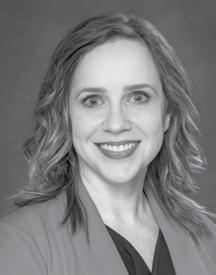
By Michelle T. Ashworth, M.D., Texas Oncology
Lung cancer treatment has come a long way in recent years. Thanks to new technologies and better teamwork among healthcare providers, people are getting diagnosed earlier and recovering faster.
Why Early Detection Is So Important
Catching lung cancer early can make a big difference. When patients are diagnosed early, the chances of living five years or more are about 64%. But if the cancer is in late stages, that number drops to just 9%. Unfortunately, most people don’t get screened — only about 18% of those who should get tested actually do, and in Texas, it’s even lower at around 10%.
People at higher risk — like those
who smoke or have been exposed to harmful substances at work — should talk to their health care provider about getting a yearly low-dose CT scan. Symptoms like a persistent cough, chest pain, or unexplained weight loss also indicate a need for screening. Your primary care provider will then let you know if the screening results suggest you need to see a thoracic surgeon or oncologist.
How Care Teams Work Together
If screening shows anything of concern, a team of specialists including surgeons, oncologists, and lung experts work together to decide the best course of action. This might include surgery, chemotherapy, or radiation, depending on the person’s health and preferences.
In the past, all potential tumors were biopsied to determine if the growth was cancerous. But sometimes, skipping the biopsy can save time and reduce risks if it won’t change the treatment plan. Surgeons can play a key role in deciding whether a biopsy

is needed before surgery, or whether exploratory surgery can be combined with removal of any nodules or tumors.
Throughout the entire process, the care team also works closely with the patient to determine how treatment fits into their lifestyle and personal goals. If physical activity is important to a patient, thoracic surgeons work to make sure they can recover quickly and return to activity as soon as possible.
Surgery That’s Easier on
the Body
For early-stage lung cancer, surgery is often the first step. In the past, this meant major operations
and long hospital stays. Today, many surgeries are done using small incisions and robotic tools. These advanced methods allow doctors to see better and move more precisely during operations. Surgeons can now reach areas of the lung that were previously hard to access, and in some cases, they can diagnose and treat the cancer in a single session, reducing the need for multiple procedures. Surgeries are also more efficient. For example, instead of
see Oncology. ...page 14


Healing In Harmony: Houston Methodist Transplant Patient Creates Album with Son, Music Therapist
While Spending 10 Months in the Hospital Before and After a Liver and Kidney Transplant, Sam Carreon, 54, Of Midlothian, Texas, Found an Unexpected Source of Healing: Songwriting
By Staff
During his stay at Houston
Methodist, Carreon worked closely with Donielle Montgomery, a board-certified music therapist, to write three original songs that captured his emotional journey. The sessions were part of the hospital’s Center for Performing Arts Medicine, the only center of its kind in the country, which integrates creative arts into patient care.
“I couldn’t wait for her to come in,” Carreon said. “That is what kept me going here in the hospital, thinking
I have something to look forward to. I knew I would go home eventually, but when? But I know Donielle will be here next week, or she’s going to be here in a couple of days, so that is what I would look forward to.”
Carreon’s son recorded the songs at the hospital, turning the therapeutic experience into a family collaboration. After Carreon’s release, Montgomery organized an album release party at the hospital, inviting the staff who cared for him to celebrate his journey. His son performed the songs live, and Carreon was presented with a custom-designed album cover created by patients in the
Advancing the practice of good medicine.

hospital’s art therapy program.
“The music really helps out,” Carreon said. “It really brings things together. You can talk about depression, anxiety and sadness, and the music lets you release your thoughts. It’s like therapy.”
Montgomery witnessed a transformation in Carreon as the sessions progressed.
“As we continued to work together, he began to open up more; his demeanor changed,” she said. “He was proud to create something
NOW AND FOREVER.
tangible that he could take with him. He was telling nurses, physicians— anyone who would listen—about the songs. He had something to show for it.”
Like Carreon, Montgomery believes music is a powerful tool for healing.
“Music is a universal language that allows for connection in many ways,” she said. “And I believe that music is medicine, just as much as some of the medications our patients take here.”
However you practice in today’s ever-changing healthcare environment, we’ll be there for you with expert guidance, resources, and coverage. It’s not lip service. It’s in our DNA to continually evolve and support the practice of good medicine in every way. That’s malpractice insurance without the mal. Join us at thedoctors.com Scan here for a rapid premium indication, and discover the unrivaled rewards of The Doctors Company.

Sam Carreon’s album cover designed by CPAM.
Hospital News
HCA Houston Healthcare Northwest Names Nadine Griffiths-Brooks as New Chief Nursing Officer
HCA Houston Healthcare Northwest is pleased to announce the appointment of Nadine Griffiths-Brooks, MSN, RN, NEA-BC, as chief
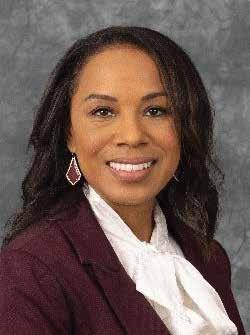
nursing officer, effective today, October 20, 2025. Nadine brings a 25-year track record of delivering extraordinary results in strategic clinical operations and team leadership across a diverse background in the healthcare field.
Nadine has held key leadership positions going back to her tenure as a charge nurse as well as experience in surgical services as perioperative nurse supervisor, nurse manager of med-surg, administrative director of critical care, vice president of clinical operations and assistant chief nursing officer. Nadine currently serves as chief nursing officer at Methodist Hospital Texsan, an HCA Healthcare facility in San Antonio, where she notably achieved the hospital’s inaugural Pathways to Excellence
designation.
Throughout her career, Nadine has been a champion for patient-centered care, working to ensure the quality and safety standards of every patient encounter. She is also passionate about the mentorship of staff and forming strong working relationships with all staff and physician partners to organize, direct, and coordinate operations.
Originally from South Africa, Nadine earned her Comprehensive Diploma in Nursing and Midwifery from Natal College of Nursing South Africa and holds a Master of Science in Nursing from Western Governor’s University. She is presently completing her PhD in Nursing Science.
As chief nursing officer at HCA Houston Healthcare Northwest, Nadine will have
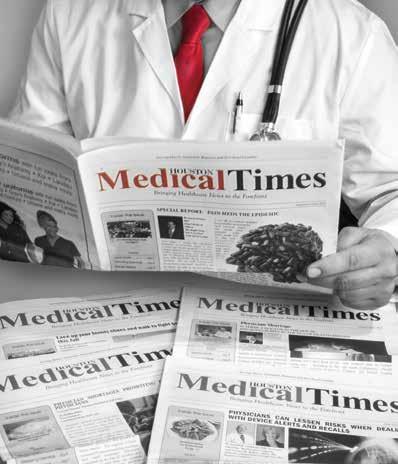
oversight and responsibility for all clinical and professional nursing practice. She will partner with the executive team and system leaders to advance the organization’s strategic agenda by focusing on exceptional, cost-effective patient care; clinical and operational excellence; physician and colleague engagement; recruitment, and retention; and strong collaboration with academic partners and external nursing leadership organizations.


Nadine Griffiths-Brooks, MSN, RN, NEA-BC
Hospital News ...continued
Memorial Hermann Health System Appoints Guy Giesecke, Senior Vice President and CEO, Children’s Memorial Hermann Hospital
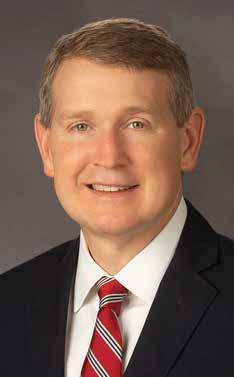
Memorial Hermann Health System is proud to announce that Guy B. Giesecke, DHA, is appointed Senior Vice President and Chief Executive Officer of Children’s Memorial Hermann Hospital.
With nearly two decades in pediatric leadership, Dr. Giesecke has significant experience leading transformative hospital growth that has expanded access to high-quality, specialized care for children and families.
“We look forward to the many ways Dr. Giesecke’s leadership will help shape the future of pediatric health at Children’s Memorial Hermann Hospital and throughout the communities we serve,” said
Michael Roussos, Senior Vice President, President of Academic Hospitals and CEO at Memorial Hermann-Texas Medical Center. “His experience and commitment will advance our efforts to create healthier communities and deliver high-value care for all.”
Dr. Giesecke joins Children’s Memorial Hermann after nearly 15 years at the University of Mississippi Medical Center (UMMC) where he served as Chief Executive Officer of Children’s of Mississippi. During his tenure, Children’s of Mississippi more than doubled its square footage, and its network of outpatient specialty clinics expanded to increase access to care for children and families across the state.

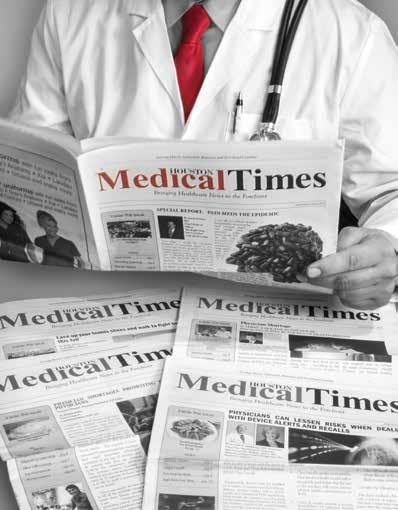
“I’m honored to join Children’s Memorial Hermann and contribute to an organization so deeply committed to advancing high-value, patient-centered care,” noted Dr. Giesecke. “This is an exciting opportunity to help build on a legacy of excellence while supporting the health and well-being of children, families and communities across the region.”

In the Bayou City, Nutcracker Market signals the turn of the season. It’s the time for Houstonians to grab their shopping bags, dust off their matching sweaters, and slip on their most supportive shoes to shop at Houston’s biggest holiday market for décor, gifts, and more. But most importantly, it’s the time to start sharing the joy of the holiday season with those closest to you, together.
13-16,
Guy B. Giesecke, DHA
Healthy Heart
Why Are People with Diabetes at Increased Risk For CVD?
By Dion Bart, American Heart Association
TheAmerican Heart Association considers diabetes one of the major controllable risk factors for cardiovascular disease (CVD).
In fact, people living with Type 2 diabetes are more likely to develop and die from cardiovascular diseases, such as heart attacks, strokes and heart failure, than people who don’t have diabetes.
Diabetes is treatable, but even when glucose levels are under control it greatly increases the risk of heart disease and stroke. That’s because people with diabetes, particularly Type
cholesterol abnormalities related to diabetes. View Type 2 Diabetes and Cholesterol (PDF).
• Obesity – Obesity is a major risk factor for CVD and has been strongly linked with insulin resistance. Weight loss can improve CVD risk, decrease insulin concentration and increase insulin sensitivity. Obesity and insulin resistance also have been linked to other risk factors, including high blood pressure.
• Lack of physical activity –Physical inactivity is another modifiable risk factor for insulin resistance and CVD. Exercising and losing weight can prevent or

2 diabetes, may have the following conditions that contribute to their risk for developing CVD.
• High blood pressure – High blood pressure is a major risk factor for heart disease and stroke. Studies have shown a link between high blood pressure and insulin resistance. When people have both HBP and diabetes, which is a common combination, their risk for CVD increases even more.
• Abnormal cholesterol and high triglycerides – People with diabetes often have unhealthy cholesterol levels including high LDL (“bad”) cholesterol, low HDL (“good”) cholesterol and high triglycerides. This often occurs in people with premature coronary heart disease. It’s also typical of a lipid disorder linked with insulin resistance called atherogenic dyslipidemia, or diabetic dyslipidemia in people with diabetes. Learn more about
delay the onset of Type 2 diabetes, reduce blood pressure and help reduce the risk for heart attack and stroke. Any type of moderate to vigorous physical activity is beneficial, such as sports, house work, gardening or work-related physical activity.
For overall cardiovascular health, the American Heart Association recommends at least 150 minutes of moderate-intensity aerobic activity or 75 minutes of vigorous aerobic activity per week (or a combination of the two), plus moderate- to high-intensity muscle-strengthening activity at least two days per week. Read the article “Get Motivated to Get Moving.”
• Poorly controlled blood sugar (too high) or out of normal range – Diabetes can cause blood sugar to rise to dangerous levels. Medications may be needed to
Together,
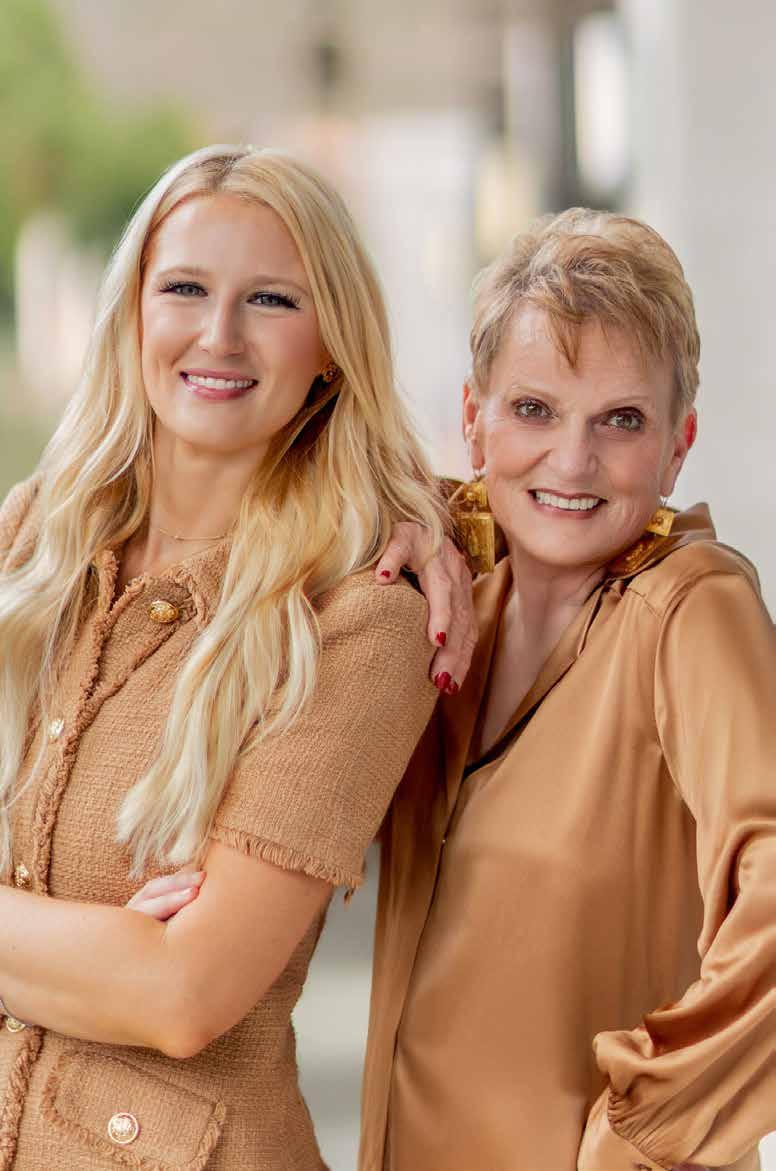
The Framework
Memorial Hermann Katy Hospital Announces Major Expansion
By Staff
Memorial Hermann Health System today announced a $282.5 million expansion of Memorial Hermann Katy Hospital, designed to meet the needs of the region’s rapidly growing population and the rising demand for high-quality, patient-centered care, supported by leading-edge technology. Construction is scheduled to begin in late 2026.
The centerpiece of the planned expansion is a new eight-story patient tower, which will include additional inpatient beds, advanced imaging services and a rooftop helipad for Memorial Hermann Life Flight. Additional plans include the expansion of the pediatric emergency center, surgical services, women’s and children’s

services, the laboratory, the pharmacy and multiple support services, including the kitchen and cafeteria.
“We are proud to announce Memorial Hermann Katy’s third major expansion in recent years,” said Jerry Ashworth, senior vice president and CEO of Memorial Hermann Katy and Memorial Hermann Cypress Hospitals. “We are making this strategic investment in response to the phenomenal growth of the greater Katy
community along with our ongoing commitment to create personalized and compassionate experiences for our patients.”
Today, Memorial Hermann Katy is finalizing an expansion that has added 100 beds, a third professional office building that is home to TIRR Memorial Hermann Pediatric Outpatient Rehabilitation-Katy, an expanded emergency center, a parking garage and more. In 2016, Memorial
Hermann Katy’s first expansion project added the East Tower and a second professional office building.
In addition to strategically growing the campus footprint, Memorial Hermann Katy also continues to grow its capabilities. The campus recently embarked on a journey to achieve Level II Trauma designation, an important step that enables the hospital to treat higher acuity trauma patients.

3100 WESLAYAN Elevate Your Practice in Upper Kirby’s Premier Medical Office Building

A premier, four-story medical office building located in the heart of Upper Kirby, offering an array of movein ready suites with free initial test fits.

Rendering of Memorial Hermann Katy Hospital expansion
Baylor College Of Medicine to Offer New Clinical Psychology Degree Program
By Staff
The Baylor College of Medicine Board of Trustees, Academic Council and Faculty Senate have approved a new Clinical Psychology Program, which will award a Doctor of Philosophy degree through the School of Health Professions. The program is now accepting applicants for the inaugural class, scheduled to matriculate in fall semester of 2026 with an anticipated cohort of 10 students.
The five-year program follows the scientist-practitioner approach, focusing on the advancement of research and evidence-based practice within clinical psychology. The curriculum is designed to develop core scientific competencies in health service psychology and clinical practice in alignment with American Psychological Association standards.
“There’s a shortage of psychologists
throughout Texas and the U.S. more broadly. This program will engage expert Baylor College of Medicine psychology faculty in addressing this problem by training learners in a rigorous curriculum focused on evidence-based psychological assessment and intervention,” said Dr. Eric Storch, professor and vice chair in the Menninger Department of Psychiatry and Behavioral Sciences at Baylor.
Students will focus on one of three areas of emphasis: general clinical psychology, clinical neuropsychology or clinical health psychology. Didactic curriculum will span the first three years of study. Clinical practicum will begin in the second year, leading to an internship in the fifth year of the program. Students will take on an active caseload under faculty supervision during their training and will focus on skill refinement, diagnostic assessment,

treatment planning and intervention and clinical decision making.
During the second year of study, students will begin a formal mentored research apprenticeship. The doctoral program culminates with a dissertation in which students will contribute to current literature through an original research project.
“The program is committed to fostering a learning environment that empowers trainees to develop knowledge, skills and abilities to excel as clinical psychologists and to serve high-need communities,” said Dr.
Wayne Goodman, professor and D.C. and Irene Ellwood Chair in Psychiatry in the Menninger Department of Psychiatry and Behavioral Sciences at Baylor Students in the program will train with faculty across Baylor College of Medicine departments at affiliate hospitals in the Texas Medical Center. They will learn from experts in a wide range of fields including neuropsychology, behavioral health, PTSD and trauma, addiction and see New Degree. ...page 13

By Tiffany Price, MSW Program Specialist V Office of Aging Services Coordination Community Services
National Family Caregivers Month in November recognizes the contributions of people who provide life-giving care to their loved ones.
Family caregivers can be spouses, parents, children or close friends. According to AARP and the National Alliance for Caregiving, there are 63 million unpaid caregivers who help their loved ones navigate life changes, tend to medical needs, provide physical and emotional support, help with household tasks,
and more.
Family caregivers can also help their loved ones plan for the future. The Texas Health and Human Services Texas Talks campaign encourages Texans to talk to the older adults in their lives about aging in a compassionate and productive way.
The theme of the 2025–2026
Texas Talks campaign is long-term care. According to the National Institute on Aging, long-term care is a variety of services designed to meet people’s health or personal care needs when they can no longer perform everyday activities on their own.
Planning ahead helps your loved ones think through their options and plan for the kind and quality of life they want. Because personal circumstances, financial resources and care options can change over time, caregivers should talk with older adults about which services could be a good fit now and in the future.
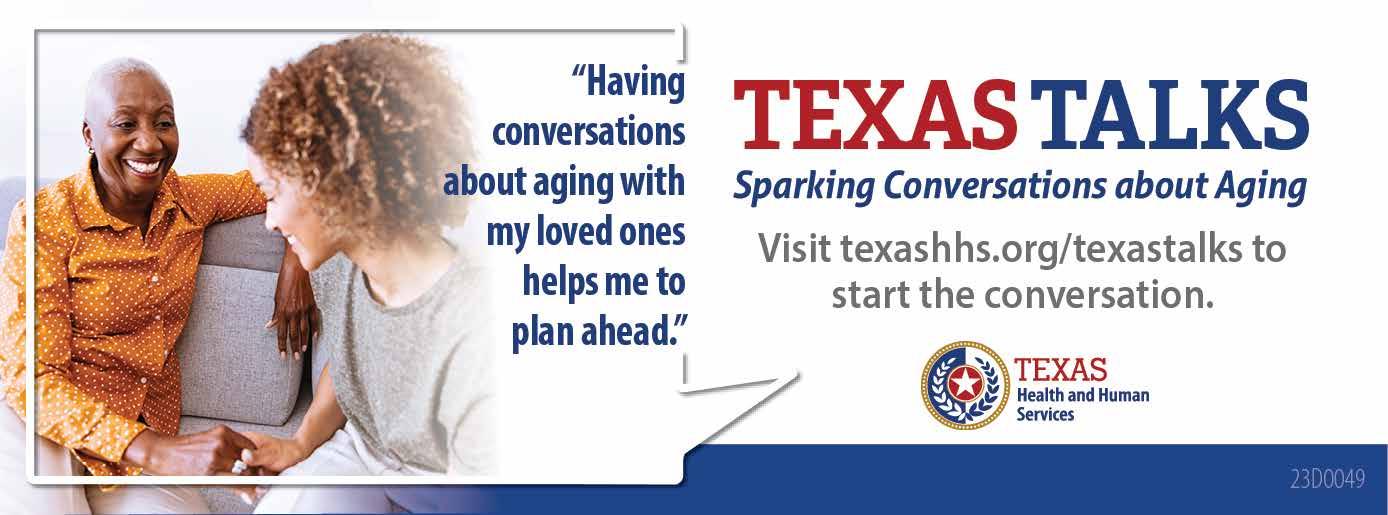


Caregiving for Veterans




From Military Service to Expert Care at St. Luke’s Health
Discover How
Former Military Surgeons at St. Luke’s Health Apply Discipline and Dedication To Deliver Personalized Patient Care with Honor and Duty
Manyof our physicians and staff were in the military before joining St. Luke’s Health-The Woodlands and The Vintage Hospitals, instilling in them the unique perspective and discipline that comes from putting one’s country first. We recently spoke with three surgeons about their time in the armed forces and how it influences their approach to medicine.
By the time he was a teenager,
can’t leave them.’” It is those powerful examples of selflessness that move Dr. Choi to “feel fortunate to have taken care of one of the best patient populations in the world,” he said.
Today, Dr. Choi is chief medical officer and a general surgeon at St. Luke’s-The Woodlands and lives every day by West Point’s motto, “Duty. Honor. Country,” defining duty as “doing what ought to be done when
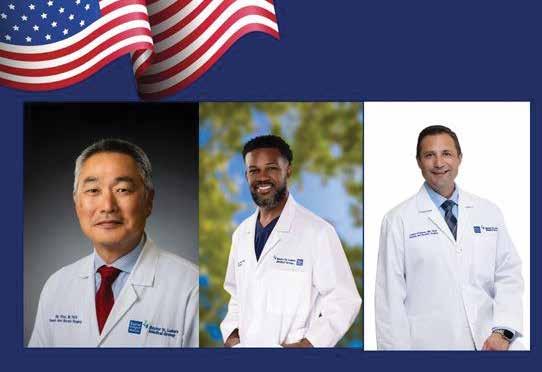
Dr. Yong Choi was well on his way to fulfilling his boyhood dream of attending the United States Military Academy and becoming a surgeon. He immigrated from Korea with his family when he was 6 years old. “I felt that going to West Point was the American dream,” he said.
Dr. Choi was one of only 20 cadets in his class at West Point allowed to enter medical school immediately after graduation. After earning his medical degree from the Uniformed Services University of the Health Sciences, he spent over 25 years on active duty, including deployments to Afghanistan and Iraq during that time.
it ought to be done when no one is looking.” In his medical practice, that translates to doing what’s best for the patient and including them in the decision making process. “I learned the importance of caring for the patient as an individual. Each patient has different needs and different ways they process information. Including them every step of the way makes them feel invested in their own care.”
General Surgeon James Dickerson entered West Point two years after Dr. Choi and also earned his medical degree from the Uniformed Services University of the Health Sciences. Their common military background was a key factor Dr. Dickerson’s decision to join St. Luke’s-The Woodlands. “I wanted to work with someone who
“We have the best soldiers in the world,” he said, citing the example of a severely wounded soldier in Iraq who was ordered to return home. “His first thought was ‘my soldiers need me. I see St. Luke’s ...page 13

Houston-West Oaks/ Energy Corridor

Located on Highway 6 South & near Westheimer Road
Prime location near major hospitals and clinics, Kroger, Walmart, Best Buy and Home Depot.
Walking distance to city bus stop, Starbucks, Olive Garden, Red Lobster, Crab Shack, McDonalds, Popeyes, Burger King, Subway, Tim Horten, etc.
Ideal for traveling nurses, and healthcare professionals.



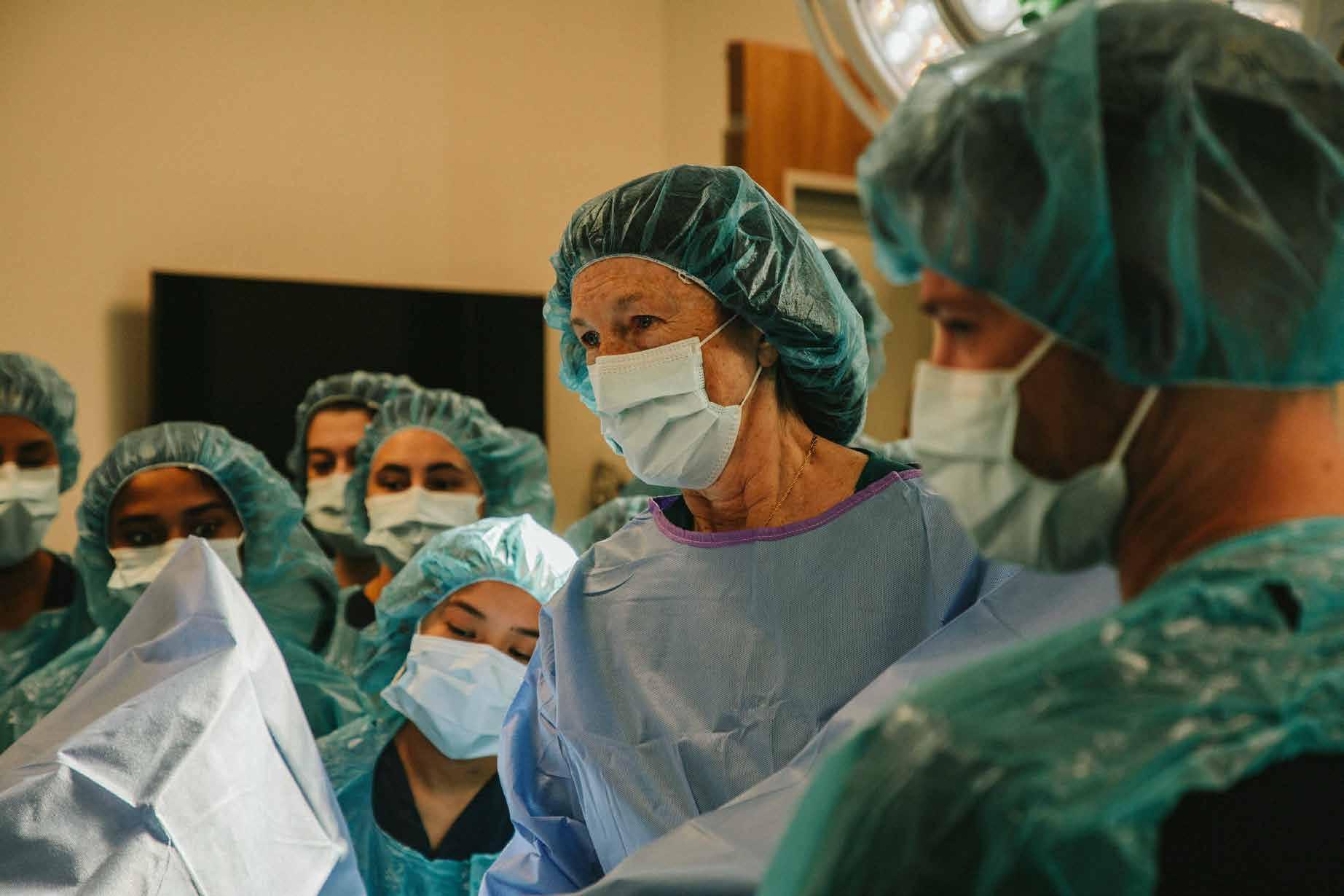

HomeTowne Studio by Red Roof
Left to right: Dr. Yong Choi, Dr. Jantzen Thorns & Dr. James Dickerson




Financial Forecast
Feeling Behind on Retirement Savings? It’s
Not Too Late to Take Charge

By Grace S. Yung, CFP Midtown Financial Group, LLC
Ifyou’re between the ages of 45 and 60 and suddenly realize you may be behind on saving for retirement, you’re not alone. Many people enter their late career years juggling mortgages, raising children, supporting aging parentsor sometimes doing all of the above - and discover that retirement feels uncomfortably close.
Here’s the encouraging truth: while you can’t go back and change when you started, you can take meaningful action today. Progress is possible, even in midlife, with a focused
your contributions. Think of this stage as getting the engine running; once in motion, you can accelerate.
Step 2: Enroll (or Increase) Contributions in Your Employer Retirement Plan
If your employer offers a 401(k), 403(b), or SIMPLE IRA, make sure you are enrolled. If there’s an employer match, contribute at least enough to receive the full match - it’s essentially “extra money” toward your future.
Already enrolled? Consider increasing your contribution rate by 1% or 2%. You may barely feel the change in your paycheck, but over time it may create significant growth potential.
Step 3: Reduce Spending and Eliminate High-Interest Debt
One of the fastest ways to create financial breathing room is to trim spending. Review recurring subscriptions, dining out frequency, or discretionary purchases. Redirect those

plan and the right guidance.
First: You Haven’t Failed - You Were Never Properly Taught
Most of us didn’t learn retirement planning in school. Topics like compounding, tax-advantaged savings, or withdrawal strategies were rarely part of standard education. So if you feel like you’re “behind,” understand this isn’t a personal failure - it’s a common reality.
What matters now is how you move forward.
Step 1: Start Saving Consistently, Even on a Modest Level
If you haven’t been saving consistently, begin immediately - even if it’s only $50 to $100 per month. This creates momentum and builds the habit. Over time, you can increase
savings toward paying off high-interest debt (like credit cards), which can drain future savings capacity.
Once debt payments decrease, those freed-up dollars can be shifted into retirement savings, helping you catch up more efficiently.
Step 4: Take Advantage of Catch-Up Contributions (Age 50+)
Once you hit age 50, retirement plans allow for higher annual contributions. This is an opportunity specifically designed for individuals who need to accelerate savings in their later working years. Even incremental increases in contributions may have a meaningful impact over a 10 – 15-year period.
Healthy Heart
Continued from page 7
manage your blood sugar.
• Smoking – Smoking puts people at higher risk for heart disease and stroke, whether they have diabetes or not. Learn how to kick the habit.
New Degree
Continued from page 9
substance use, obsessive-compulsive and anxiety related disorders, serious mental illness, community participatory research and more. Within the first two years of the program, students will develop foundational skills at a community and training clinic,
St. Luke’s
Continued from page 11
shared my experiences, my work ethic, and approach to things,” he explained, explaining how military standards never waiver. “You work until the job is done, you work without complaining, and you lead by example.”
He calls upon that fortitude whenever he encounters a difficult medical case, never giving up and doing his utmost for the patient no matter the challenges of the situation. “You do what you have to do to provide the best possible care to the patient.”
Dr. Dickerson grew up in a military family and always wanted to serve his country and become a doctor.
People with insulin resistance or diabetes and one or more of these risk factors are at even greater risk of heart disease or stroke. People with diabetes may avoid or delay heart and blood
vessel disease by managing their risk factors. Your health care team will do periodic testing to assess whether you have developed any of these risk factors for CVD.
integrating didactic learning and hands-on clinical experience. Students will serve a broad and diverse client base, providing them with exposure to a wide range of psychological issues.
“The Clinical Psychology Ph.D. Program is fully aligned with the
He retired as an Army colonel after 25+ years, with deployments to the Middle East and Africa. This Veteran’s Day, he hopes Americans will remember U.S. servicemembers. “We need to keep our soldiers and their families in our minds and our prayers,” he said. “They are out there making sacrifices every day so that we can be afforded the great benefits and freedoms we have today.”
As a teenager, Dr. Jantzen Thorns couldn’t wait to join the Army and saw it as a path to prosperity. He always wanted to be a physician even though no one in his family had ever attended college. He enlisted at 17 years of age as
Financial Forecast
Continued from page 12
Step 5: Reevaluate Your Retirement Timeline and Adjust Expectations
If you feel behind, it may be time to reassess key assumptions:
• Could you work a few years longer if needed?
• Would part-time income in early retirement help you transition?
• Are lifestyle adjustments possible to reduce anticipated income needs?
Adjusting direction now can give you more control over your timeline and expectations.
Step 6: Work with a Certified Financial Planner Professional to Build a Clear Strategy
When you’re trying to catch up, knowing where to start - and what to prioritize - can be overwhelming. This is where partnering with a CFP professional can make a significant difference.
A Certified Financial Planner professional can help you: Determine how much you realistically need Prioritize debt reduction vs.
School of Health Professions strategic plan. We are excited to expand our family of exceptional graduate health professions programs and to amplify the impact of the school to include the training of mental healthcare providers and researchers,” said Dr.
Find more tools and resources for managing your diabetes and reducing your risk for CVD at KnowDiabetesbyHeart.org.
Todd Reinhart, dean of the School of Health Professions. “This program will serve many communities within the Baylor, Texas Medical Center and Greater Houston ecosystems.”
a way to pay for tuition and to develop personally. Mission accomplished.
While in the service, he served as a combat medic, then a licensed vocational nurse, and finally, a dialysis nurse. After his honorable discharge, he went on to graduate from medical school at The University of Texas Health Science Center at San Antonio and obtained a Master’s of Public Health from The University of Texas Health Science Center at Houston.
Today, Dr. Thorns is a general surgeon at St. Luke’s Health-The Vintage and The Woodlands.
“During the five years I spent
in the Army, I got to see exactly what professionalism looked like. I got to see what it looked like to lead people, good leadership and bad leadership. And I got to see what it meant to actually care and demonstrate that,” he said. Dr. Thorns leads his team in the operating room, borrowing an acronym from his basic training: “LDRSHIP: Loyalty, Duty, Respect, Selfless Service, Honor, Integrity, and Personal Courage.” Through the Army, I’ve been allowed to live the dream that I dreamed about as a kid. Most people can’t say that. I credit the Army for making me the man I am today.”
savings
Maximize retirement plan opportunities
Identify tax-efficient strategies
Build a plan you can actually stick to
Having a roadmap helps remove uncertainty and gives you direction, accountability, and confidence.
You Still Have Time - But Action Starts Now
Feeling behind doesn’t mean you’re out of options - it means you’ve reached a turning point. Whether you
start by saving $50 a month, increasing your 401(k) contribution, or setting your first catch-up goal, every action you take is a step toward regaining control of your financial future. Your next move matters. A CFP professional can help you build a plan, stay on track, and turn worry into progress.
Today is a good day to start.
Drug Ads
Continued from page 1
indications and are not required to provide adequate directions for use, contraindications and side effects.
This regulatory tension places compounded pharmacies in a difficult position. On one hand, they are prohibited from implying that their products are equivalent to FDA-approved medications. On the other hand, they are now being criticized for omitting information that only exists in FDA-approved labeling That regulatory Catch-22 makes it especially challenging for platforms to navigate promotional claims without drawing scrutiny.
FDA’s Authority Remains Unclear — and Unchallenged
FDA hasn’t formally shared the basis for its claimed jurisdiction over digital health platforms, but its recent actions suggest a potential theory:
Oncology
Continued from page 3
removing an entire section of the lung (a lobectomy), surgeons can now remove just a small part (a segmentectomy) if the cancer is small. This helps preserve healthy lung tissue and improves recovery.
it could be taking the position that digital health platforms, telehealth services, and compounding pharmacies are acting as a “common enterprise” by causing prohibited acts under the FDCA, bringing them within FDA’s authority.
That departure from the norm creates a conundrum for the industry. Because warning letters are not final agency actions, they typically can’t be challenged in court. Companies are therefore left to interpret FDA’s vague position without a clear mechanism to dispute it until FDA takes a final enforcement action, like seeking to impose criminal or civil penalties. Until then, FDA’s assertion of its expanded regulatory authority is likely to go untested.
What Companies Can Do Now Addressing the violations
in the warning letters is relatively straightforward exercise for most digital health platforms. But as FDA enters a new era of aggressive enforcement, it is crucial for companies operating in the digital health and compounding space to reassess their practices. Specifically, companies not included in FDA’s first round of letters should not assume they are exempt from scrutiny and should reassess their risk tolerance as FDA intensifies its enforcement efforts. This may include reauditing advertising practices and removing any claims that suggest a compounded drug product is clinically proven or comparable to its FDA-approved counterpart.
Providers have seen that these modern methods cause less pain, fewer complications, and allow people to go home within a day or two. Some even return to normal activities quickly.
Overall, these rapid advances in personalized and tailored lung cancer care combines technology and teamwork to deliver faster diagnoses, gentler treatments, and better support for patients.
Age Well, Live Well
Continued from page 10
November is also Veterans Month in Texas. Caregivers play a vital role in the lives of many U.S. military service members and veterans. Their time and emotional support contribute significantly to the recovery and well-being of veterans.
The Program of Comprehensive Assistance for Family Caregivers provides education and training, mental health counseling, and other
benefits to caregivers of veterans. Learn more on the U.S. Department of Veterans Affairs website. Support for Caregivers
Caregiving can be challenging. Remember to schedule time for you to rest and recharge. Find support to strengthen the care you give, and learn more about the types of long-term care available in your community.
Military caregivers can also find
support and information through the Veterans Affairs Caregiver Support Program.

Scan to Visit
Houston Medical Times is Published by Texas Healthcare Media Group, Inc. All content in this publication is copyrighted by Texas Healthcare Media Group, and should not be reproduced in part or at whole without written consent from the Editor. Houston Medical Times reserves the right to edit all submissions and assumes no responsibility for solicited or unsolicited manuscripts. All submissions sent to Houston Medical Times are considered property and are to distribute for publication and copyright purposes. Houston Medical Times is published every month
P.O. Box 57430 Webster, TX 77598-7430





Dementia CME for Primary Care Providers

Help your patient and their family make the best-informed decisions.
Earn free online Continuing Medical Education (CME) credits developed by the Texas Department of State Health Services and physician experts on Alzheimer’s disease and related dementias. These courses will keep you up to date on the latest validated assessment and screening tools, help you direct patients to community resources, and reinforce your role in helping patients and their families manage symptoms throughout the disease process.
Learn more at dshs.texas.gov/alzheimers-disease/provider
